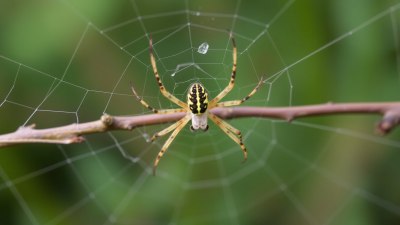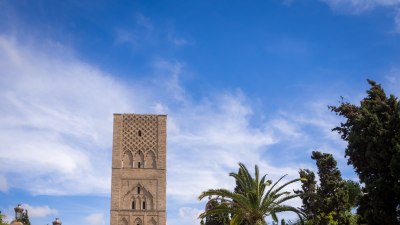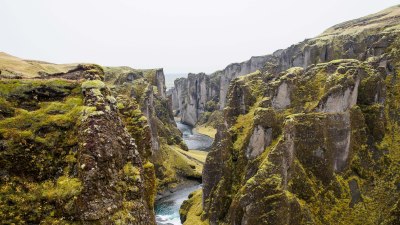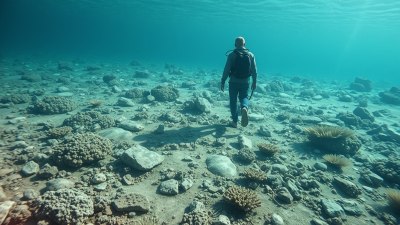Learning to Identify Local Spiders and Arachnids on Nature Walks
Explore local spiders and arachnids during nature walks to enrich your understanding of biodiversity.

Image created with Flux Schnell
Nature walks are a delightful way to connect with the outdoors, and one of the most intriguing aspects of hiking through forests, fields, or gardens is the variety of wildlife one encounters. Among the most fascinating but often overlooked inhabitants are spiders and arachnids. These creatures are not only vital for our ecosystems, but they also offer an exciting challenge for enthusiasts wanting to learn more about their local environment. This article aims to guide you through the basic identification of spiders and arachnids you might encounter during your nature walks.
The Importance of Spiders and Arachnids
Spiders and other arachnids play crucial roles in our ecosystems. They are significant predators that help control insect populations, acting as natural pest control agents. Without their presence, many insects could multiply uncontrollably, leading to imbalances in nature. Moreover, spiders are part of the food chain; birds, mammals, and other predators rely on them for food. Understanding their roles can give you a greater appreciation for these often-misunderstood creatures.
Basic Anatomy of Spiders and Arachnids
To identify local spiders and arachnids, it's essential to understand their anatomy. Spiders and arachnids belong to the class Arachnida, which includes ticks, mites, scorpions, and more. They share common characteristics: two main body segments known as the cephalothorax and abdomen, eight legs instead of the six found in insects, and the presence of chelicerae (mouthparts) that include fangs. Many spiders also produce silk, used for various purposes, like building webs or creating egg sacs.
Common Families of Spiders
Several families of spiders are common across various regions. Here are a few notable ones you might encounter:
1. Araneidae (Orb-Weavers)
Orb-weavers are easily recognizable due to their wheel-shaped webs. They have a diverse range of sizes and colors. Most are harmless to humans, and their webs can be found in gardens, forests, and fields.
2. Salticidae (Jumping Spiders)
Jumping spiders are known for their ability to leap impressive distances. They lack web-building abilities but are agile hunters. Their large front-facing eyes provide excellent vision, allowing them to stalk prey effectively. Look for their distinctive body shapes and vibrant markings.
3. Thomisidae (Crab Spiders)
Crab spiders are named for their crab-like appearance and movements. They are often found on flowers, waiting to ambush unsuspecting insects. Their ability to change color to blend in with flowers adds to the challenge of identifying them.
4. Lycosidae (Wolf Spiders)
Wolf spiders are robust and agile hunters that do not spin webs but actively hunt for their prey. They are often seen wandering at night. Their unique eyes, arranged in a distinctive pattern, can help in identification.
5. Linyphiidae (Sheet Weavers)
Sheet weavers are tiny spiders that create flat sheets of silk rather than large, intricate webs. They are often overlooked due to their small size but are common in grasslands and forests.
Identifying Local Species
To effectively identify spiders and arachnids, you can follow a few steps:
1. Observation
Pay attention to the size, color, and shape of the spider or arachnid. Use a magnifying glass for a closer look if necessary, particularly for identifying markings and the arrangement of their eyes.
2. Habitat
Take note of the habitat where you find the spider. Certain species prefer wooded areas, while others thrive in gardens or open fields. The surrounding vegetation can also offer clues about what kind of species might be present.
3. Behavior
Observe the spider’s behavior. Is it weaving a web, hunting prey, or hiding? Behavior can often be a significant indicator of the species you are dealing with.
4. Use Resources
Utilize field guides, apps, or online resources dedicated to local arachnids. Many resources provide pictures and descriptions to aid in identification. Joining local nature groups can also be helpful as experienced enthusiasts can assist you.
Understanding Web Types
Identifying the type of web can also be a helpful clue in identifying spider species. Various spiders construct different types of webs: round webs, funnel-shaped webs, cobwebs, and sheet webs, each served distinct purposes—from catching prey to providing shelter.
Handling Spiders and Arachnids
If you find yourself wanting to observe a spider up close, it’s important to handle them carefully. Most spiders are harmless, but it’s best to avoid directly touching them. Use a container to gently transport the spider if necessary. Always release them back into their natural habitat after observation; doing so helps support local ecosystems.
Photographing Spiders
Documenting your findings through photography can enhance your experience. Bring a camera or smartphone with a macro lens to capture details. Remember to respect their space; maintain a safe distance to avoid startling them. Good lighting and a steady hand help achieve clearer images, which can be invaluable for later identification.
The Seasonality of Spiders
Spiders are seasonally active creatures, and the best time for encountering them often depends on the species. Spring is a wonderful time to spot orb-weavers constructing their webs, while late summer and early fall might yield more sightings of wolf spiders as they become more active. Understanding the seasonal patterns can enhance your nature walks.
Common Myths About Spiders
There are many myths about spiders and arachnids; debunking these can lead to a better understanding of these creatures. For instance, not all spiders are dangerous to humans. In fact, the majority are harmless and play essential roles in keeping insect populations in check. Sharing factual information about spiders can help reduce fear and promote appreciation.
Educational Resources
To delve deeper into the world of arachnology, explore online courses, documentaries, and podcasts focused on spiders and arachnids. Also, consider participating in community science projects, where you can report your findings and contribute to scientific research.
Embarking on nature walks with the goal of identifying local spiders and arachnids enriches your outdoor experience and deepens your understanding of the ecosystem. With practice, patience, and observation, you’ll learn to appreciate these remarkable creatures, contributing positively to your local biodiversity. Whether an experienced naturalist or a casual walker, making an effort to learn about these fascinating diminutive hunters can enhance any adventure in the wild.











